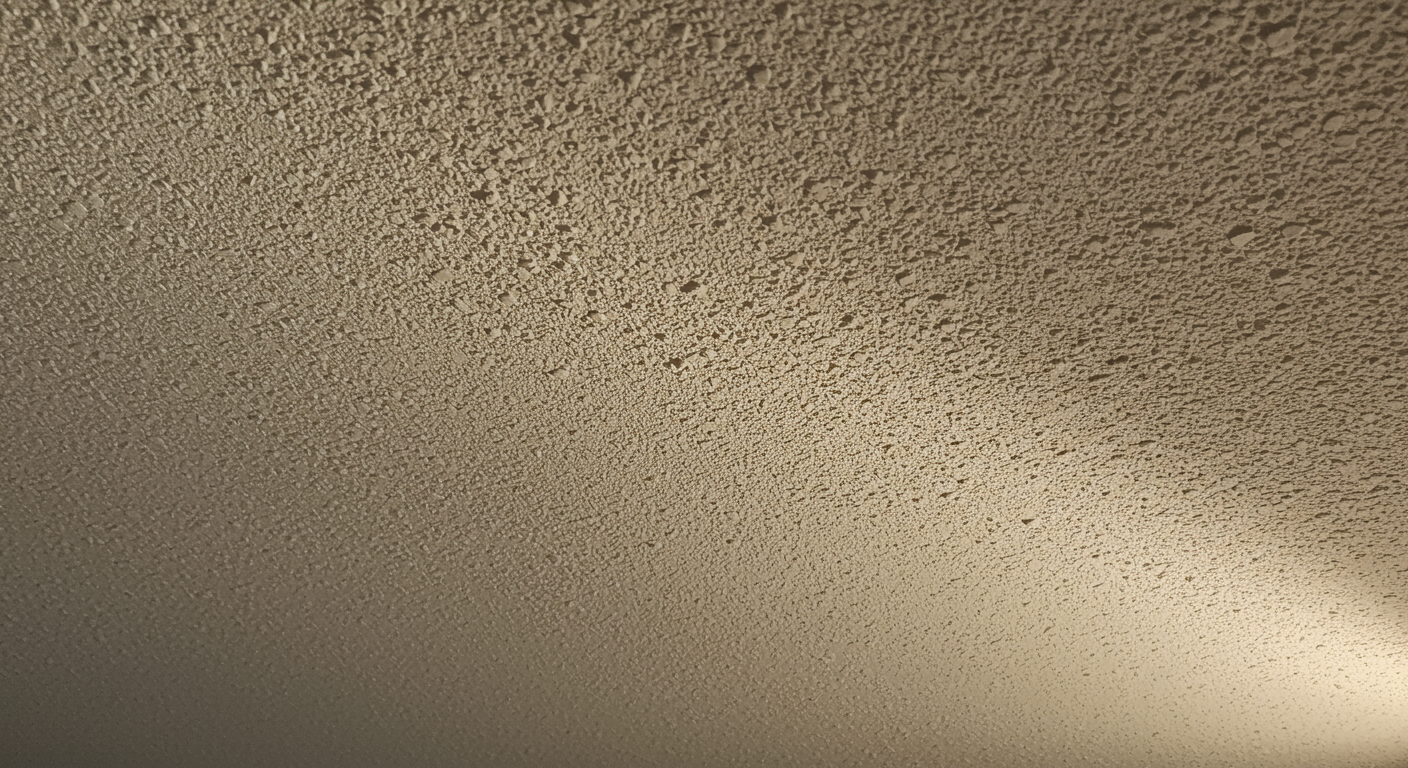Popcorn ceilings, also known as acoustic ceilings, were a hallmark of mid-20th-century interior design. Their unique texture and practicality made them a popular choice for homeowners during that era. However, as design trends have evolved, these once-beloved ceilings have faced a decline in popularity. This article explores the reasons behind the rise and fall of popcorn ceilings, their advantages and disadvantages, and their historical significance.
What are Popcorn Ceilings?
Popcorn ceilings, named for their bumpy, textured appearance, were a common feature in homes built between the 1930s and 1990s. This ceiling style was created by spraying a mixture of drywall compound, polystyrene, and sometimes asbestos onto the ceiling surface. The result was a textured finish that resembled popcorn or cottage cheese.
The installation process was relatively simple and cost-effective, which contributed to its widespread use. Contractors favored this technique because it required minimal preparation and could easily cover imperfections in the ceiling. Additionally, the texture provided acoustic benefits, reducing noise levels in homes and apartments.
Reasons for Popularity in the Mid-20th Century
Cost-Effectiveness of Installation
One of the primary reasons for the popularity of popcorn ceilings was their affordability. During the mid-20th century, builders sought cost-effective solutions to meet the demands of the post-war housing boom. Popcorn ceilings were a budget-friendly option that allowed contractors to save time and money on labor and materials.
Sound Absorption Properties
Popcorn ceilings were also valued for their acoustic properties. The textured surface helped to dampen sound, making them an ideal choice for multi-story homes and apartment buildings. This feature was particularly appealing in urban areas where noise reduction was a priority.
Minimal Maintenance Requirements
Another advantage of popcorn ceilings was their low maintenance. The textured surface effectively concealed cracks, stains, and other imperfections, reducing the need for frequent repairs or repainting. For homeowners looking for a practical and hassle-free solution, popcorn ceilings were an attractive option.
The Decline of Popcorn Ceilings
Aesthetic Preferences Over Time
As design trends shifted towards sleek and modern aesthetics, popcorn ceilings began to fall out of favor. Homeowners started to prefer smooth, flat ceilings that complemented contemporary interior styles. The textured appearance of popcorn ceilings was increasingly seen as outdated and incompatible with modern design sensibilities.
Health Concerns Related to Asbestos
One of the most significant factors contributing to the decline of popcorn ceilings was the discovery of asbestos in their composition. Before the 1980s, many popcorn ceilings contained asbestos, a hazardous material linked to serious health risks such as mesothelioma and lung cancer. The Environmental Protection Agency (EPA) eventually banned the use of asbestos in building materials, leading to a decline in the popularity of popcorn ceilings. For more information on asbestos-related risks, check out this comprehensive guide to old siding with asbestos.
Modern Alternatives to Textured Ceilings
Advancements in construction materials and techniques have provided homeowners with a variety of alternatives to popcorn ceilings. Smooth ceilings, coffered designs, and other modern options offer a more refined and updated look. These alternatives not only enhance the aesthetic appeal of a home but also eliminate the health and maintenance concerns associated with popcorn ceilings.
Pros and Cons of Popcorn Ceilings
Advantages: Hiding Imperfections and Noise Reduction
Popcorn ceilings excel at hiding imperfections such as cracks, stains, and uneven surfaces. Their textured finish provides a practical solution for homeowners looking to mask flaws without extensive repairs. Additionally, the acoustic properties of popcorn ceilings make them effective at reducing noise, creating a quieter and more comfortable living environment.
Disadvantages: Cleaning Challenges and Outdated Appearance
Despite their advantages, popcorn ceilings come with notable drawbacks. Cleaning and maintaining these ceilings can be challenging due to their textured surface, which tends to trap dust and cobwebs. Moreover, their outdated appearance can detract from a home’s overall aesthetic, potentially lowering its resale value. For homeowners considering a modern update, professional popcorn ceiling removal services can help transform their living spaces. Learn more about this process here.

Popcorn ceilings hold a unique place in the history of interior design. While their practicality and affordability made them a popular choice in the past, changing tastes and health concerns have led to their decline. Today, homeowners have access to a wide range of modern ceiling options that offer both aesthetic appeal and functionality. Whether you’re looking to preserve the charm of a vintage home or update your living space, understanding the reasons behind popcorn ceilings can help you make informed decisions about your home’s design.


